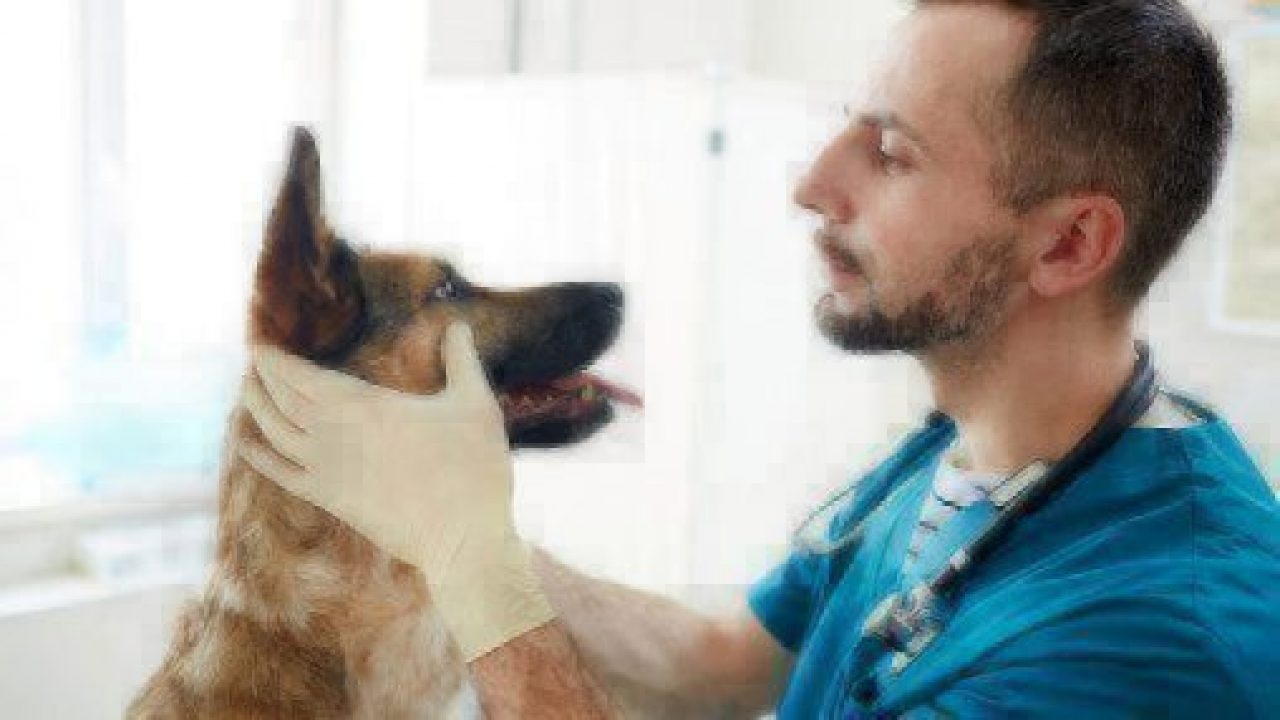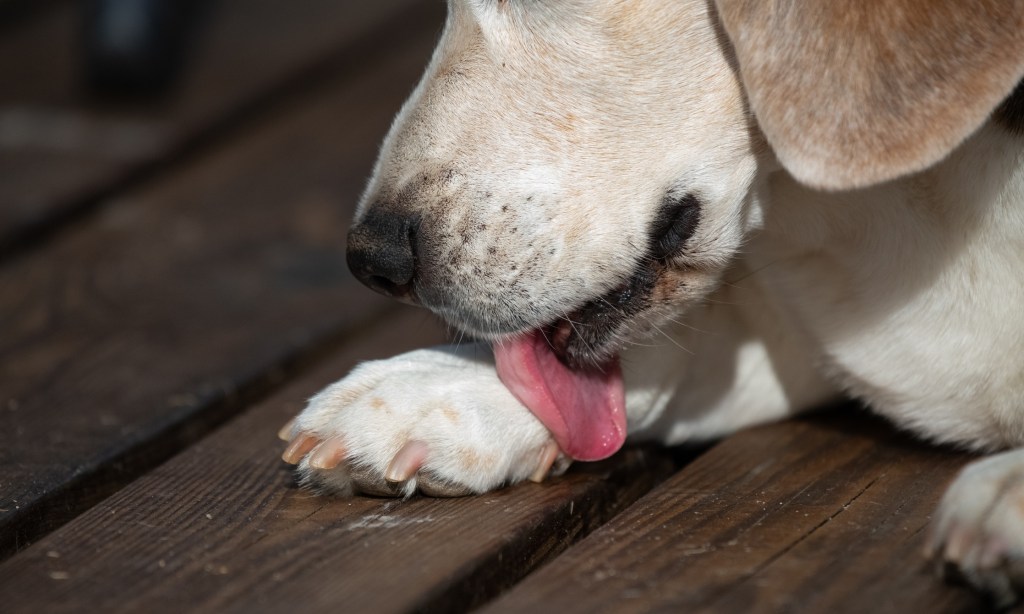Table of Contents
Key Takeaways
- Ringworm is an infection of a dog’s fur and superficial dermal layers.
- Signs of ringworm are scabby skin, brittle fur, and circular areas of hair loss.
- Ringworm is commonly mistaken for other skin diseases.
- Ringworm can be transmitted from dogs to humans.
- Limit contact between an infected dog and other pets and humans to prevent the spread of ringworm.
Despite its name, ringworm isn’t caused by a wriggly worm, but rather, by a collected family of fungal species. Ringworm, or dermatophytosis, is an infection of the superficial dermal layers, including the fur. The disease gets its name from the raised, ring-shaped lesions that sometimes appear on the skin. However, some dogs with ringworm have no visible symptoms, while others can potentially lose fur in large patches. It’s important to recognize these common signs and know how to treat ringworm in dogs, as it can be a fairly common condition that is one of a few pathogens that can also be transmitted to humans.

Signs of Ringworm
Hair loss (focal or multifocal alopecia) is the primary sign of ringworm in dogs. You may notice a patchy area, sometimes in a circular ring pattern. The fungi’s unique markings occur when the lesion begins to heal in the center, yet the edges still creep outwards. Despite what you might think, excessive itching is not a sign of ringworm, although secondary infections can occur if scratching breaks the scabs that form.
Other common signs of ringworm in dogs and puppies include:
- Inflamed or scabby skin
- Circular areas of hair loss anywhere on the body
- Dry and brittle fur
- Rough, brittle claws
In its early stages, ringworm isn’t particularly itchy or painful, so your dog may be completely unaware that he or she has an infection on their skin/fur. If the condition progresses and does not self-resolve, lesions and pustules may develop, which then can create irritation and inflammation. No matter how developed the fungus is, it’s still a zoonotic condition, meaning it is contagious to humans and should be treated quickly.
Definitive Diagnosis and Treatment
Only a veterinarian can officially diagnose ringworm, which can often be mistaken for other skin diseases. One of the simplest and easiest ways a veterinarian can prove ringworm is present is by using a Wood’s Lamp, or a specialized ultraviolet light, which will highlight ringworm yellow-green due to the organism’s excretions. During a physical exam – with gloves, of course – the vet may take a skin or hair sample in order to perform specific tests, such as a culture test, where the infection is proven to be present in a laboratory setting.
There are multiple methods of treatment for ringworm in dogs, depending on how severe the case. Locally-applied topical ointments or shampoos can be prescribed in mild cases. In more advanced cases, your veterinarian may prescribe a course of oral medications in combination with topical-based therapy; it is crucial to finish this regimen and follow up for regular recheck exams.
Lastly, the most important point to institute is to keep any infected animals separate from all other pets and as many humans in the household as possible – no shared toys, crates, beds or bowls. It may even be worth having all your animals checked out by a vet as soon as ringworm is diagnosed, just in case the fungus has already spread.
Environmental Considerations and Disease Prevention
Once your dog has been diagnosed with ringworm, it’s equally important to address the environment. Specifically, it is important to clean all the surfaces in your home (or hire someone to do it). The fungus is also tougher than most household cleaners, requiring a 10-percent bleach solution on hard surfaces, or a specialized anti-fungal cleaning product on softer materials to destroy it. Use diluted chlorine bleach to also wash all items an infected dog may have come into contact with, including bedding, bowls, toys and dog clothes. Ringworm is a very stubborn infectious agent and can survive up to 18 months on or in objects, in ventilation ducts, heating and air filters, carpets, curtains and floors, etc.
According to veterinarian Dr. Lila Miller, cramped conditions – like those in shelters – are considered the classic incubator for ringworm in dogs. “[Ringworm] occurs more readily in overcrowded, humid or poorly ventilated environments, conditions that are also not uncommon in many shelters,” Dr. Miller said in a resource provided by the Petfinder. “Excessive bathing or moisture on the skin as often occurs during routine cage cleaning can predispose cats to infection.” On the contrary, young puppies or senior dogs, both of which can have less robust immune systems or preexisting skin conditions, are more likely to contract ringworm through existing cuts in the skin, as are senior pets who fail to groom themselves thoroughly and remove fungus spores.
Can I Get Ringworm From My Dog?
Just as dogs can get ringworm from other dogs, ringworm is also highly transmissible between dogs and humans. Ultimately, you can contract ringworm from them, and they can get it from you. This is why it’s exceedingly important to quickly diagnose and treat any affected dog or person in your home. You should also quarantine and carefully handle your pet until the ringworm has been completely eradicated by proven follow-up hair culture tests performed by your veterinarian 1-2 months out from the initial diagnosis date.
It’s important to note that cats, especially long-haired breeds, are actually the #1 transmitter and asymptomatic carrier of Microsporum canis, the most common type of dermatophyte in small animals. Learn more about ringworm in cats.
The content is not intended to be a substitute for professional veterinarian advice, diagnosis, or treatment. Always seek the advice of your veterinarian or other qualified health provider with any questions you may have regarding a medical diagnosis, condition, or treatment options.









